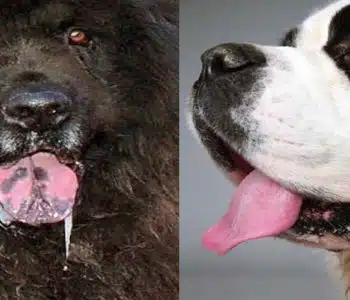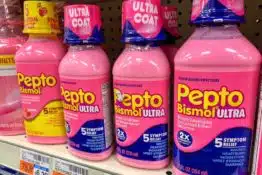
English Cream Dachshund: A Posh English Gentleman
Table of Contents
- 1 German Sausage Meets Crème Anglaise: The English Cream Dachshund Mix
- 1.1 Overview of the Dachshund and the English Cream Retriever Breeds
- 1.2 How to Recognize a Mini English Blonde
- 1.3 English Blonde Dachshund Temperament: Big Personality in a Small Body
- 1.4 Three Reasons Not to Get the English Cream Dachshund Puppy
- 1.5 Three Reasons to Get the Wiener English Cream
- 1.6 How Does the Dachshund English Cream Rank on the Trainability Scale?
- 1.7 Is the Doxie Blonde Retriever Mix the Right Pick for a Family?
- 1.8 Blonde Dachshunds Beauty Routine
- 1.9 Health Issues in the Cream Colored Dachshunds: What to Keep an Eye on
- 1.10 Weenie English Cream Workout Needs
- 1.11 Choosing the Right Chow for the Doxie Blonde Retriever
- 1.12 Take a Moment to Check out These Lovely Dachshund Combinations
- 1.13 References:
German Sausage Meets Crème Anglaise: The English Cream Dachshund Mix
Image source: mayathedox
Despite the vast differences in the physical appearances of these two breeds, crossing the Dachshund with the English Cream Retriever seems to work well. We attribute this to a common trait found in both dog breeds—their irresistible cuteness.
If you don’t know what we are talking about, take a look at these adorable English Cream puppies and hilarious Dachshund memes, and you’ll get the picture.
Sit tight as we dive deeper into this mix, giving you all the necessary info to decide whether these crossbred pooches are the right pick for you.
Overview of the Dachshund and the English Cream Retriever Breeds
We believe that a comprehensive guide to any designer dog isn’t complete without a proper introduction to their parental breeds. Before we tell you more about the English Cream Dox, let’s see what their parents are like.
The Dachshund
As their name suggests, the Dachshund originated in Germany and was initially bred to help hunters and farmers get rid of burrow-dwelling animals, such as badgers or moles, by flushing them out of their underground tunnels.
They were bred to be short in stature with exceptionally long bodies so that they could easily slip inside narrow tunnels.
Over time, their primary role was slowly abandoned, and they became popular family dogs. They rank high on the official American Kennel Club’s most popular dog breed list as well as in our selection of the best dog breeds to adopt.
The English Cream Retriever
The origin of the English Cream dates back to the 19-century Scotland, where this intelligent breed was developed as a hunting companion. They are often considered a color variant of the Golden Retriever. The most apparent difference between the two breeds is the Cream’s stockier built and slightly wider face.
They were specifically designed to retrieve shot waterfowl, which explains their muscular built and long, fluffy coat. They were able to cross long distances in a short time, while their fur kept them warm in the water.
In the 20th century, they were recognized as outstanding family pets, and their popularity has been on the rise ever since. Just like their more famous Golden relatives, they are among the most commonly kept dog breeds around the world.
How to Recognize a Mini English Blonde
Image source: zoeythedox
The lack of standard for designer dogs means that no two puppies are alike. One litter can sometimes produce many different features in pups to the point that they can hardly be associated with any of the parental breeds.
Most commonly, English Cream Weenies are medium-sized dogs, with somewhat elongated bodies and short legs ending in large paws. Their head is a perfect mixture of their parents’—a medium-length muzzle with dark, round eyes and high-perched, fold-over ears.
When it comes to the coat, they come in many varieties, depending on the Doxie in the mix. They sport short, medium, or long hair, which can be smooth or wiry. If the hair is longer, they may have a fluffy undercoat. The color of the coat also varies and can be cream, brown, fawn, or pale yellow.
| Weight | 30–60 pounds |
| Height | 10–22 inches |
| Size | Medium |
| Coat type | Short to long; smooth, straight or wiry |
| Coat color | Cream, brown, fawn, or pale yellow |
| Shedding | Low to high |
| Eyes | Round; brown or hazel |
| Nose | Medium-length; black or light brown |
| Ears | Fold-over |
| Temperament | Affectionate, friendly, curious, stubborn |
| Life expectancy | 10–14 years |
| Hypoallergenic | No |
| Kid-friendly | Yes |
| New owner friendly | Yes |
| Breed recognition | Dachshunds were recognized by the AKC in 1885; the association does not recognize English Cream Golden Retrievers nor English Cream Golden Retriever Dachshunds |
English Blonde Dachshund Temperament: Big Personality in a Small Body
Image source: mr_andsister
The English Cream Doxie’s personality may vary. Although predicting their exact temper is nearly impossible, they tend to be social and caring dogs that enjoy being around people.
While Doxie’s genes dominate their overall looks, their temperament usually leans to the Creamy side, making them more social and obedient than Weenies.
They are spirited in nature and are described as all-around people lovers. Those taking more after the English Cream are not one-person dogs. Early socialization and spending time with the whole family will shape them into perfect family pets who are eager to please and protect their owners.
Their welcoming disposition makes them lousy guard dogs, though—they are more likely to welcome a stranger than warn you about them.
While the Blonde Retriever tones down the inherent hunting instincts of this hybrid, they may still be curious about smaller pets in your home. Don’t be surprised to find them chasing a hamster around the house or trapping them under the furniture.
What this hybrid lacks in stature, they make up for in energy. Both the Weenie and the English Cream are energetic dogs that can walk, jump, run, or play for hours. Without an adequate amount of exercise, they can be nervous and destructive. You shouldn’t hold this against them—it’s their restless Dachshund ancestry. To better prepare for the lively Dachs in your Creamer, read these essential Doxie facts.
Three Reasons Not to Get the English Cream Dachshund Puppy
Here are the reasons why you should consider another pup instead of the Cream Doxie:
- They need lots of exercise
- They may be high-maintenance
- They are prone to many health conditions
Three Reasons to Get the Wiener English Cream
Here are three reasons this combination may be perfect for you:
- They make great family pets
- They can be trained fairly easily
- They are a good choice for first-time owners
How Does the Dachshund English Cream Rank on the Trainability Scale?
Image source: lucy_the_ween
Since one half of this cross is the Blonde Retriever, the Doxie English Cream combo moves a couple of notches up on the trainability scale. English Retrievers are known as one of the easiest breeds to train, which comes in handy when the other half is the stubborn Dachshund.
Focus on the English Cream’s desire to please and try to keep Doxie’s hard-headedness in check. If the pup exhibits stubbornness or sulkiness, don’t let them get the best of you—punishing them will be counterproductive.
They will thrive on positive reinforcement, so make sure you keep enough (read: lots of) treats by your side at any time. These tried and tested best dog treat brands will surely keep your pooch coming back for more and make learning new commands easier. Giving them these worst dog treat brands will make training your Dachshund a nightmare.
If you stumble somewhere along the way, don’t despair. As a last resort, you can always turn to a professional trainer, although we strongly advise you to persevere in training your puppy as it will strengthen the bond between you. We can even offer you our top tips for potty training a Doxie.
If you’ve already kicked off the training sessions with your newly adopted English Cream Wiener, try avoiding these five common training mistakes. You’ll thank us later.
Is the Doxie Blonde Retriever Mix the Right Pick for a Family?
Imager source: max.the.dox
As we mentioned earlier, these doggies tend to be quite affectionate toward people. Unless they take after their Dachshund parent, they will probably be in love with all your family members.
Remember that genes are not everything. From an early age, you should nurture their people-loving nature by letting them spend time with all house members and introducing them to strangers.
Blonde Retriever Doxies who take more after their English parent will almost certainly know their way around children. Because of their curious and playful nature, they will have tons of adventures with kids. At the same time, their keenness to protect will keep the children safe. They are so affectionate and lovable that it’s no wonder they inspired so many Dachshund gifts and other memorabilia!
Blonde Dachshunds Beauty Routine
The time you will spend taking care of this hybrid largely depends on the Doxie in the combination. The smooth-coated variety will require the least grooming, while the long-haired and wire-haired kind must be brushed more frequently.
With the smooth kind, brushing once a week will be enough. The other two coat types will require brushing twice a week.
With the English Retriever in the mix, the pooch will most certainly have an undercoat that sheds seasonally. Be ready to increase the brushing frequency in spring and fall and occasionally take your dog for professional grooming. Alternatively, brush up on these top dog grooming tips and tend to your Doxie’s lush coat yourself!
| Brushing frequency | Brushes for English Cream Dachshund Mix |
| ● Twice a week (low-shedding season)
● Daily (high-shedding season) |
● Slicker brush (for the smooth variety)
● Pin brush (for the long-haired variety) ● Bristle brush (for the wire-haired variety) |
Health Issues in the Cream Colored Dachshunds: What to Keep an Eye on
Given that Doxie Blonde Retrievers are designer dogs, they may inherit any condition their parental breeds are prone to.
If possible, check the dog’s parents’ medical records or ask the breeder to share as much information as possible about their health. If you’re adopting, make sure you run all the necessary tests to determine whether your pup is predisposed to a certain condition.
There are several issues you should keep an eye on when it comes to the health of the Doxie Blonde Retriever. We grouped the most common ones into four categories:
- Cancers
- Joint abnormalities
- Eye issues
- Back problems
Cancers
Cancers are found to be the number one health issue affecting Golden Retrievers and their Cream cousins. According to a study conducted by the Golden Retriever Club of America, cancer is the cause of death of 61.4% of these pooches in the U.S. The most common among them are hemangiosarcoma (cancer of the blood vessels), lymphoma (affecting lymphocyte cells), and mast cell tumor (affecting skin, spleen, liver, etc.).
Joint Abnormalities
Joint abnormalities affect dogs of all sizes but are somewhat more common in small and medium-size dogs. Given the stature of the English Cream Dachshund, it means that they too can suffer from them. Some of the most frequently occurring abnormalities are hip and elbow dysplasia. Reputable breeders screen puppies for these conditions, but if you’re adopting, you should make a vet appointment and see if your pooch’s joints are developing as they should and what you can do to keep their joints healthy.
Eye Issues
Among eye issues affecting canines, cataracts are by far the most common. This condition manifests as partial or complete cloudiness of the eye lens and can lead to the loss of vision. Other eye conditions include progressive retinal atrophy, glaucoma, and corneal dystrophy.
Back Problems
Because of their elongated backs, Blonde Weenies may suffer from various back problems. The most frequent among them is intervertebral disk disease. This condition causes the cushioning disks between spinal bones to erode and can lead to complete paralysis.
Although some of these Dachshund health issues can be fatal and can shorten their lifespan too soon, the majority of them can be treated successfully if diagnosed on time. They can also suffer from seizures and skin conditions that can become quite a hurdle if left untreated. If you notice any change in the dog’s behavior, don’t wait before you take them to the vet! Regular checkups—coupled with a healthy lifestyle—may increase your best friend’s longevity and reduce the risk of many diseases.
| Major concerns | Minor concerns | Occasional tests |
| ● Cancers
● Joint abnormalities ● Eye issues ● Back issues |
● Epilepsy
● Patellar luxation ● Hypothyroidism ● Cardiomyopathy |
● Physical/neurologic examinations
● Blood tests ● Eye examination ● Radiographs ● X-Rays |
Weenie English Cream Workout Needs
Image source: daily_dose_of_darcy_and_david
Both Blond Wiener’s parental breeds are dogs that burst with energy, and their offspring need a lot of exercise to stay healthy and in a good mood. They love to explore their environment and socialize with other dogs. Keep this in mind when you feel like cutting back on their walks.
This mix falls into the category of moderately active dogs, which means that they need 45–60 minutes of workout every day. Divide this into a minimum of two vigorous 15- to 20-minute walks and 10–20 minutes of other activities.
They like to have their minds occupied and will enjoy any interactive activity. Here are some you can try:
- A flirt pole is essentially a dog toy on a rope. You drag it on the ground letting the dog catch it occasionally. This exercise is highly interactive and doesn’t require much space, which makes it perfect for bad weather days.
- Frisbee is the well-known kids’ game, but you can play it with your furry bud as well. On a sunny day, take your dog to the park and watch them bring you back that strange plastic thingy that keeps flying away.
- Swimming is one of the best exercises for both you and your pooch. English Creams are true water dogs and love bathing instinctively. Once you see the joy on their faces when in the water, you’ll know what we are talking about.
Keep in mind that the amount of exercise reflects on your dog’s health. Exercise has a cumulative effect—the more active you keep them, the healthier they will be.
| Activity level | Recommended miles/day | Activity minutes/day |
| Moderate | 6–10 | 45–60 |
Choosing the Right Chow for the Doxie Blonde Retriever
Finding the right food for your furball can be tiresome. Not only are there thousands of brands, but your pooch also has to put their seal of approval before you are allowed to buy more of the same food.
What you should look for in dog food is healthy ingredients that supply a balanced protein-to-fat ratio — a high protein diet can lead to health problems. Doggos also need lots of fiber as they rarely eat vegetables, which makes consuming enough fiber through kibble or canned food crucial.
Relying on the feeding guides of a particular brand is always a good idea. For this mix, the recommended amount of food is up to three cups of food a day. Occasionally, you can give them treats and snacks, but make sure you set a limit (because they certainly won’t!).
For your convenience, we’ve compiled several useful guides to help you steer through numerous dog food brands on the market:
- Best dry dog food for small dogs
- Best puppy food brands
- Best senior dry dog food
- Best canned dog food
- Best dry dog food
You should stay away from these worst dry dog food and the worst wet dog food brands—they contain harmful preservatives and won’t do your pooch any good.
Take a Moment to Check out These Lovely Dachshund Combinations
Dachshunds are certainly something to write home about — even the likes of Picasso couldn’t resist their charm! If you change your mind about getting a Doxie Blonde Retriever, we have other Weenie hybrids in store for you:
References:
- https://en.wikipedia.org/wiki/Golden_Retriever#British
- https://en.wikipedia.org/wiki/Dachshund
- https://www.grca.org/wp-content/uploads/2015/08/healthsurvey.pdf
- MacKenzie, Edie. Golden Retrievers. Barrons Educational Series, 2010.
- Lappalainen, Anu Katriina, et al. “Estimate of Heritability and Genetic Trend of Intervertebral Disc Calcification in Dachshunds in Finland.” Acta Veterinaria Scandinavica, vol. 57, no. 1, 2015, doi:10.1186/s13028-015-0170-7.
80% of Dogs Develop Arthritis or Joint Pain by 7 Years old – Here’s How to Protect Them
Most of us train our dogs when they are puppies to jump up on furniture. We think it’s harmless (and easier than always lifting them), but for dogs, couches and beds are very high compared to the size of their bodies.
Every time they jump it compresses their back and applies enormous force to their joints.
It’s no wonder that an incredible 80% of dogs experience arthritis or joint pain by only 7 years old.
Luckily, there is a vet-recommended solution.
It’s the PawRamp by Alpha Paw. An adjustable ramp that allows dogs to safely get on and off couches and beds. PawRamp makes joining you in bed or on the couch effortless and fun.
As a bonus, you can use code SAVE35 to get $35 off the PawRamp today.





















